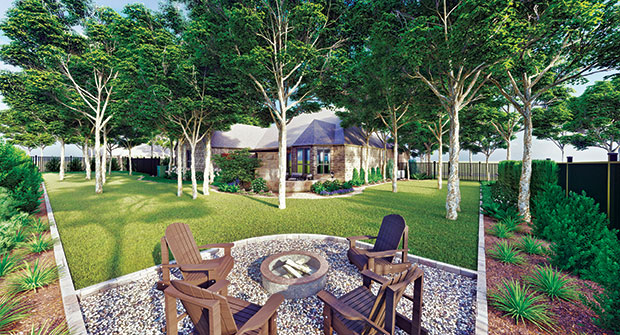
Are you seeing ads pop up on social media for virtual design services like Yardzen and Tilly? Let’s dive in to see how these services work, and whether you should consider them to be your competition or possible partners.
“Acting as a design team extension, we’ve been a way for smaller landscape companies who don’t have a full staff or a full designer on staff to offer their clients great designs,” says Blythe Yost, CEO and landscape architect at Tilly. “We’ve also helped larger companies with their overflow accounts as well. About 71 percent of our (homeowner) clients say that they would have either postponed their project or designed their space themselves. We look at our services as supporting design/build.”
Allison Messner, CEO and co-founder of Yardzen, agrees that design services companies are helping raise the bar in the industry, versus competing with existing contractors.
“The best contractor partners for us recognize and appreciate the value of working with Yardzen on the design so they can focus on the build,” Messner says. “Additionally, the vast majority of our (homeowner) clients report that they haven’t previously, nor would have, used a landscape designer for their project, so in that way, we’re growing the market.”
How it works
First, the contractor or homeowner requests a design through the design services company’s website. The turnaround time on the design is about one to two weeks, depending on the project and the company, and the completed designs are photo-realistic renderings.
To design a project, design services often request photos, measurements, a site survey and a completed questionnaire about the site.

Tilly and Yardzen vet their designers thoroughly, ensuring they have graduated from accredited landscape design programs, are insured and have proof of past work.
The companies also employ a team of principle designers who are full-time employees of each respective company, in addition to other landscape designers and landscape architects who work on the company’s platform as their schedule allows.
With Tilly, a contractor can submit the design on behalf of the client. Tilly for Pros is the name of the platform when a contractor requests a design.
“We ask very pointed questions of the contractors because for our model, they’re the go-between, so we want to make sure we pick up on all the elements in a design,” Yost says.
Tilly offers three packages, each at a flat fee: front yard ($375), backyard ($525) and full yard ($775) with design elements on the outside of the house, such as walkways and plant materials. It doesn’t tackle projects that are more than an acre.
With Yardzen, the homeowner submits the design request, and Yardzen chooses a contractor in its network that it thinks would work well based on project scope and geographic location.
If the homeowner client is a referral from a contractor in the Yardzen Pro Network, Yardzen ensures they reconnect when it comes time to build. The company also offers its contractors a referral bonus for every design client they refer.
Yardzen’s fees are based on lot size and the work the homeowner wants to do. One plan deals with planting, another with planting and hardscape design and a third with planting, hardscape design and home exterior services, such as paint, roofing and new doors and windows. The design plans start at $649 and scale up based on lot size and whether the exterior design is included. The finished design is then sent to both the contractor and the homeowner, according to Messner.
“We work with landscape contractors from coast to coast who are in our Pro Network,” Messner says. “At the end of the design process, we connect our homeowner clients to contractors to bring those designs to life. A design only gets a client so far, so we put a lot of energy into nurturing and fostering those partnerships with contractors.”


